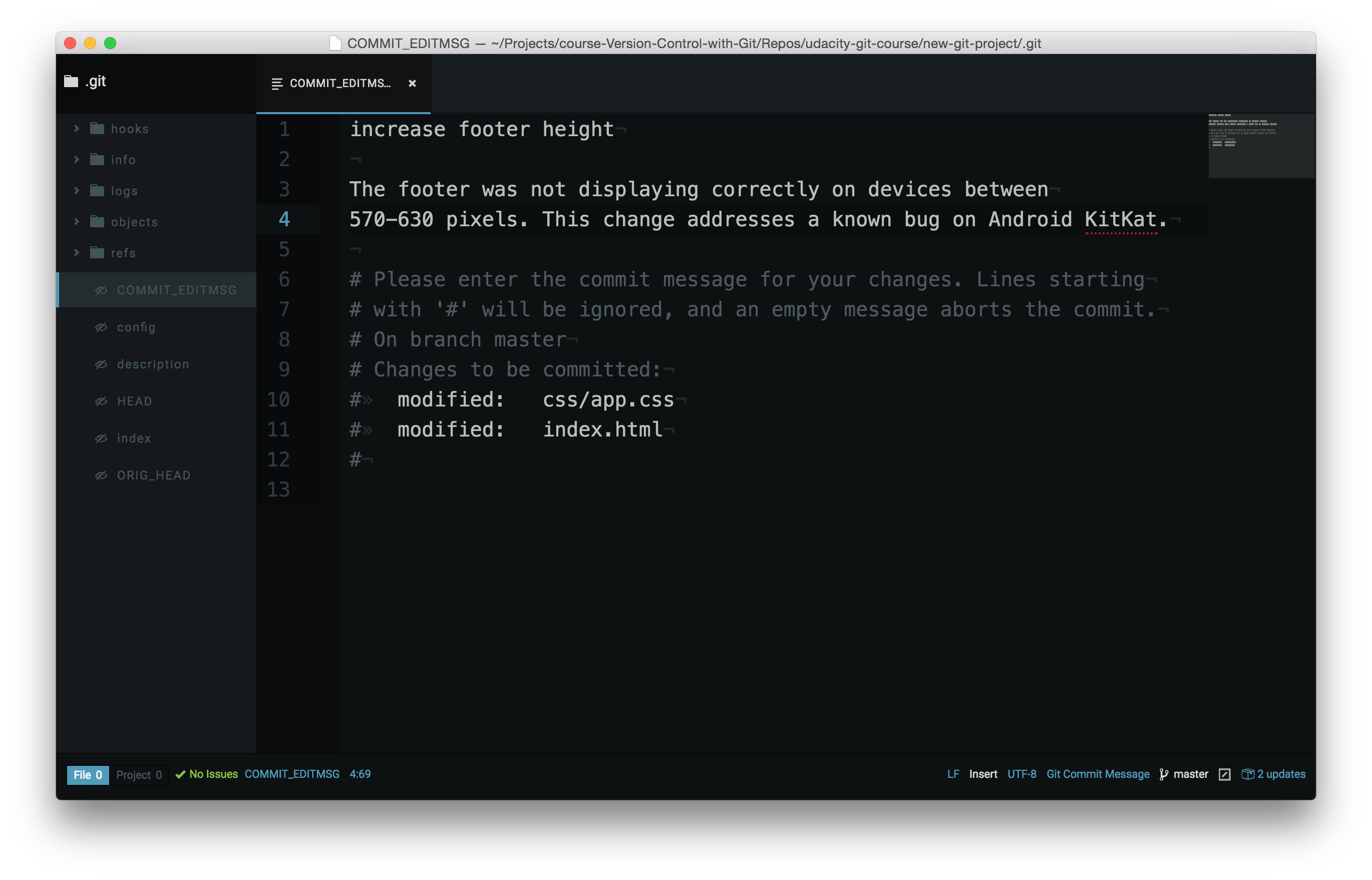04. Commit Messages
Good Commit Messages
Let's take a quick stroll down Stickler Lane and ask the question:
How do I write a good commit message? And why should I care?
These are fantastic questions! I can't stress enough how important it is to spend some time writing a good commit message.
Now, what makes a "good" commit message? That's a great question and has been written about a number of times. Here are some important things to think about when crafting a good commit message:
Do
- do keep the message short (less than 60-ish characters)
- do explain what the commit does (not how or why!)
Do not
- do not explain why the changes are made (more on this below)
- do not explain how the changes are made (that's what
git log -pis for!) - do not use the word "and"
- if you have to use "and", your commit message is probably doing too many changes - break the changes into separate commits
- e.g. "make the background color pink and increase the size of the sidebar"
The best way that I've found to come up with a commit message is to finish this phrase, "This commit will…". However, you finish that phrase, use that as your commit message.
Above all, be consistent in how you write your commit messages!
Is This A Good Commit Message?
SOLUTION:
YesIs This A Good Commit Message? 2
SOLUTION:
NoIs This A Good Commit Message? 3
SOLUTION:
NoExplain the Why
If you need to explain why a commit needs to be made, you can!
When you're writing the commit message, the first line is the message itself. After the message, leave a blank line, and then type out the body or explanation including details about why the commit is needed (e.g. URL links).
Here's what a commit message edit screen might look like:

Code editor showing the commit message edit window. A message has been typed, followed by a blank line, followed by the body of the commit.
This details section of a commit message is included in the git log. To see a commit message with a body, check out the Blog project repo and look at commit 8a11b3f.
Only the message (the first line) is included in git log --oneline, though!
Udacity's Commit Style Requirements
As I've mentioned, there are a number of ways to write commit messages. If you're working on a team, they might already have a predetermined way of writing commit messages. Here at Udacity, we have our own standard for commit messages. You can check it out on our Git Commit Message Style Guide.
If you haven't chosen a commit message style, feel free to use ours. But if you're working on an existing project, use their existing style; it's much more important to be consistent with your actual team than to be consistent with us!
Git Diff Up Next!
In the next section, we'll look at a new tool (with a familiar output!). This tool will tell us what changes we've made to files before the files have been committed!